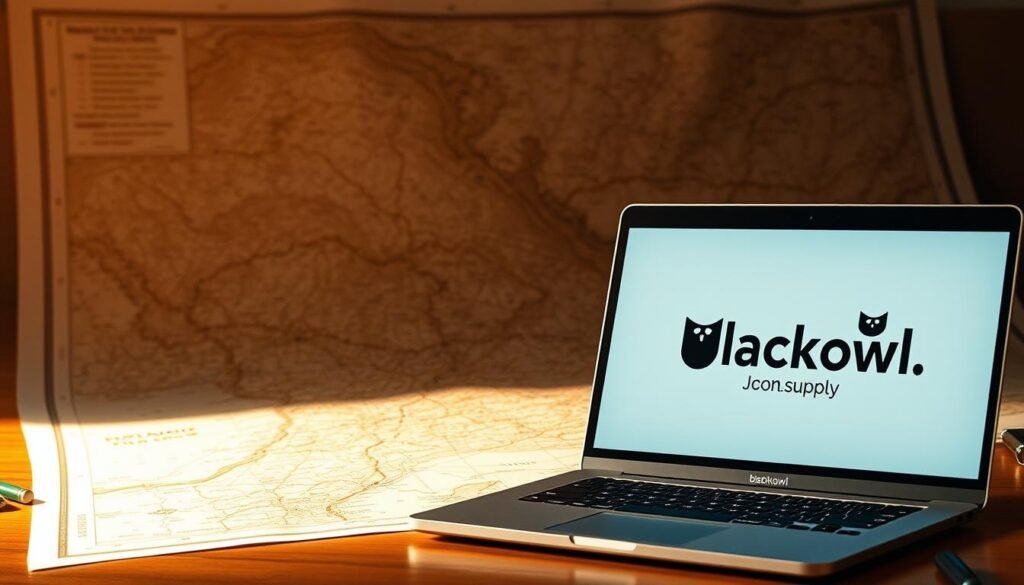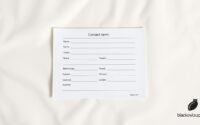Contingency Mapping: Online Tools and Real-World Examples
What if a simple visual could help your family act faster and safer when seconds count?
You will learn clear, small steps to make a living plan on the fridge that guides kids, teens, older adults, and caregivers during a blackout, evacuation, or a heated moment.
Visual maps show likely outcomes of choices using color cues, which helps teach functionally equivalent alternatives to challenging behavior. Research from Brown and Mirenda and work by Tobin and Simpson show these supports help initiate tasks and reduce risky acts.
In this guide, you get household-ready strategies, editable templates in PowerPoint and Google Slides, tips for laminating, and simple ways to fade visuals as skills grow. Proper planning and practice save time when real stress hits.
Key Takeaways
- Maps make expectations clear for every family member.
- Use brief visuals to teach safer alternatives to challenging behavior.
- Start with a clear target, collect baseline, then teach with minimal prompts.
- Editable templates and laminate tricks help you update plans quickly.
- Research supports these methods for education and home support.
Why Contingency Mapping Matters for Your Family’s Emergency Readiness
Clear symbols and short steps reduce panic and guide better choices when the unexpected happens.
You can bring classroom-tested supports into your home with simple contingency maps that show the ABCs: Antecedent (what starts it), behavior (what happens), and consequences (what follows).
These visuals help students and other individuals spot triggers and notice patterns in stressful situations. They make it easier for a student or a sibling to pick a positive behavior when alarms sound or power fails.
From classroom to living room: visual behavior supports for individuals and families
The plan is short, concrete, and shared. When your family helps choose icons, the story of the plan sticks. Use photos for young kids and brief text for teens so everyone can follow the same way.
“A simple picture guide beats a long lecture when seconds count.”
- Teach one step at a time.
- Link choices to natural outcomes and calm praise.
- Review maps regularly for new patterns.
| Household Situation | Antecedent | Positive Choice | Natural Consequence |
|---|---|---|---|
| Alarm sounds | Noise/flash | Go to meeting spot | Safe regrouping |
| Power outage | Lights off | Get flashlight | Light and calm |
| Heated argument | Raised voices | Ask for a break | Time to cool down |
Proper planning and consideration are two of the more important keys in survival prep. Take them seriously and revisit your maps often so the support grows with your family.
Contingency Mapping: Online Tools and Real-World Examples
Start small: name one clear action to change, then show two simple paths so everyone sees the likely outcome of each choice.
Step-by-step: define, identify, map, and set consequences
First, define the target behavior in precise, observable terms. Take a short baseline so your family can collect data on frequency before you teach the plan.
Identify the antecedent and the behavior’s function. Then create a visual contingency map that shows the trigger, the preferred alternative action, and its reinforcing outcome.
Family-focused templates: routines, drills, and communication
Use templates for morning routines, safety drills, and crisis communication so the right actions are visible before stress hits. Laminate slides for dry-erase updates and to practice often.
Teach and practice: role-play, prompts, and reinforcement
Present the map with minimal verbal prompts to avoid drawing attention to problem behavior. Role-play scenarios like a blackout so students and other individuals rehearse calm choices.
Evidence snapshot, data, and review
Research shows visuals often beat talk alone for initiating routine tasks and reducing challenging acts in students. Track simple weekly tallies to watch reductions in problem behavior and increases in preferred actions.
“Planning and consideration are keys in survival prep—use this step-by-step approach and templates to prepare.”
| Step | Task | Measure |
|---|---|---|
| Define | Write target behavior | Baseline count (data) |
| Teach | Show map, role-play | Tallies / checkboxes |
| Review | Fade visual over time | Decrease in problem behavior |
Tools, Templates, and Examples You Can Use Today
Grab ready-made templates so your family can print a fridge-ready plan in minutes.
Free, editable templates are available from Autism Classroom Resources and a Teachers Pay Teachers freebie. Download PPTX files, upload them to Google Slides or Keynote, or save as PDFs for quick printing.

Visual-first approach: use large fonts, clear icons, and simple arrows so students and other individuals can scan a map under stress. Laminate sheets for dry-erase updates and keep copies in the kitchen, car, and go-bag.
- Borrow social behavior frameworks like Social Behavior Mapping to link actions, feelings, and outcomes.
- Use Amy Buie’s categories—Consequence Maps, Language Maps, Problem-Solving Maps—to structure plans for home or classroom settings.
- Create a short crisis communication map that lists who to call, a one-line script, and a reunion spot.
“Keep your plan simple, practice it in short drills, and update it as routines change.”
| Template | Format | Best use |
|---|---|---|
| Fridge map | PPTX / PDF | Daily routines, blackouts |
| Quick exit map | Google Slides | Fire drills, safe exits |
| Communication map | Keynote / PDF | Contact scripts, meet-up spots |
Bookmark a page of ready templates like ready templates so you can update plans fast. Planning and practice boost confidence and promote positive behavior when it matters most.
Conclusion
Short, picture-based plans let kids and adults see the right next step in seconds.
Proper planning and consideration are two of the more important keys in survival prep—take them seriously. Use simple maps on the fridge to show an antecedent, a clear action, and the natural outcome so everyone knows what to do.
Rely on minimal verbal prompts while you teach. Track a bit of data to spot patterns in student behavior and problem behavior, then reinforce alternatives until independence grows.
Templates from Autism Classroom Resources and Teachers Pay Teachers give you a quick start. Bookmark this guide and come back often for new templates and updated examples that keep your family ready.
FAQ
What is a contingency map and how can it help my child at home?
A contingency map is a visual chart that shows triggers, behaviors, and outcomes so you can spot patterns and plan supports. At home, it helps your family predict stress points, reduce problem behavior by changing routines, and teach positive alternatives through clear, consistent consequences and rewards.
How do I use ABC (Antecedent-Behavior-Consequence) to prevent problem behaviors during emergencies?
Start by recording what happens before a behavior (antecedent), the behavior itself, and the immediate outcome (consequence). Use that data to change antecedents—like giving warnings or simplifying steps—teach replacement skills, and set natural consequences that encourage safer choices during drills or real events.
Which digital formats work best for creating visual behavior supports?
Use PowerPoint, Google Slides, or Keynote for editable, visual-first charts you can update quickly. Export to printable PDFs for laminating and reuse. These formats let you add photos, icons, and simple text to make maps accessible for different ages and learning needs.
Are there free templates or ready-made resources I can adapt for my family?
Yes. You can find free, editable templates on teacher resource sites and platforms like Teachers Pay Teachers. Look for family-focused routines, safety drills, and communication plans you can personalize with your child’s triggers, preferred calm-down strategies, and rewards.
How do I teach and practice a map so my child understands it?
Use short, frequent role-play sessions with minimal verbal prompts. Model the desired response, provide immediate positive reinforcement, and practice in safe, low-pressure settings before testing during real drills. Gradually fade prompts as your child gains independence.
What data should I collect to know if my approach is working?
Track a baseline of how often the behavior occurs, note antecedents and consequences, and record changes after interventions. Use simple charts—count instances, duration, or intensity—and review weekly to adjust strategies or fade visuals when progress is steady.
How can these maps support siblings and adults during stressful events like blackouts?
Create family-friendly maps that assign clear roles (who checks supplies, who comforts the child), visual steps for safety exits, and calm-down strategies for everyone. Having shared expectations reduces confusion and models steady responses for children.
Do evidence-based studies support using visual maps for behavior support?
Research, including work by Brown & Mirenda and Tobin & Simpson, shows visual, structured supports improve understanding and reduce problem behavior for many learners. Use those findings to guide simple, consistent designs and collect your own data to measure impact.
When should I consult a special education or behavior specialist?
Reach out if behaviors persist despite consistent mapping, if safety is at risk, or if you need help identifying function or designing individualized supports. A specialist can refine interventions, suggest data collection methods, and coordinate with schools or therapists.


